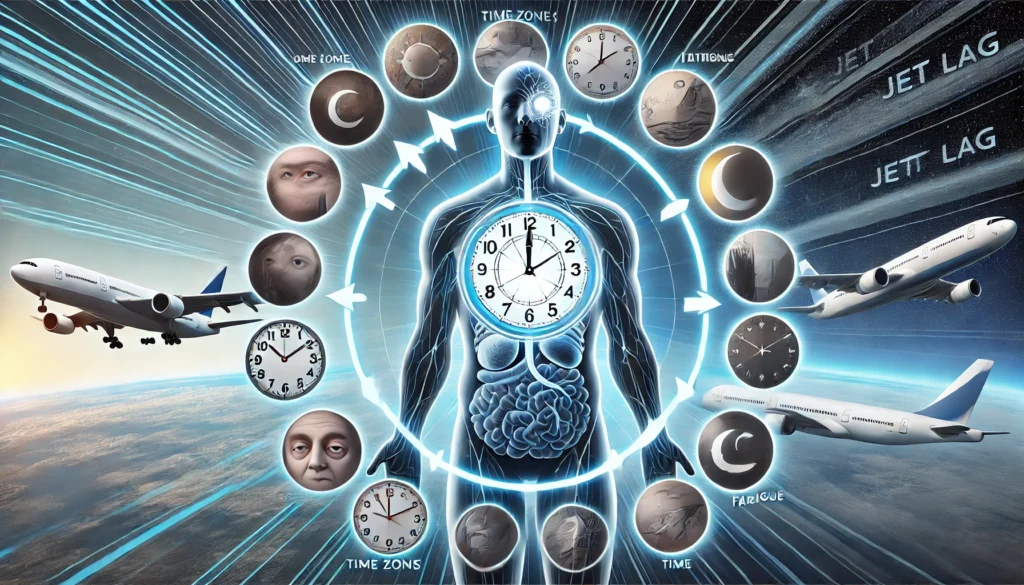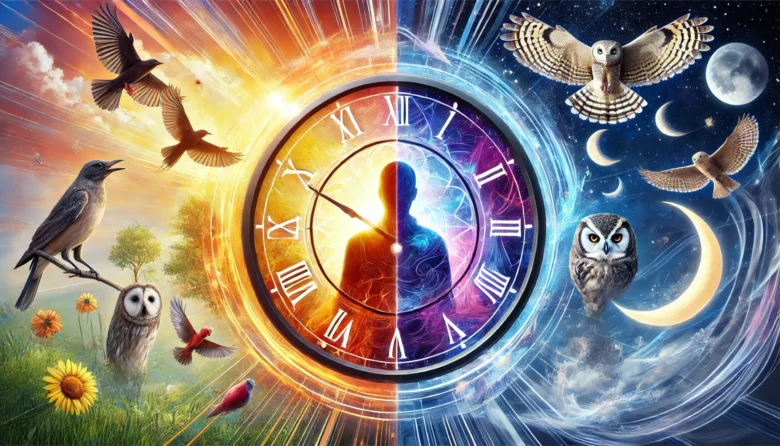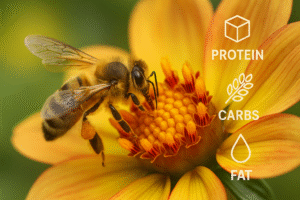Have you ever wondered why you feel more energetic during the day and tend to get sleepy at night? Or why do animals follow certain patterns of activity, such as birds chirping at dawn or nocturnal creatures becoming active after sunset? This predictable cycle is all thanks to something called circadian rhythms. In this blog, we’ll dive into the fascinating world of circadian rhythms in humans and animals and how these biological clocks help regulate life’s rhythms.
What Are Circadian Rhythms?
Circadian rhythms function as 24-hour internal clocks, governing essential physiological processes in all living organisms, such as humans, animals, plants, and even microorganisms. These rhythms help control when you sleep, wake up, eat, and even how your body temperature fluctuates throughout the day. Circadian rhythms are governed by an internal “master clock” located in the brain’s suprachiasmatic nucleus (SCN). The SCN receives cues from the environment—primarily light and darkness—to keep your body’s processes in sync with the day-night cycle.
The word “circadian” comes from the Latin words “circa” (around) and “diem” (day), meaning “about a day.” This makes sense when you consider that circadian rhythms repeat roughly every 24 hours.
Circadian Rhythms in Humans
Let’s start with the human body. Our circadian rhythms control various processes, including the sleep-wake cycle, hormone release, and metabolism. While we might not always think about it, circadian rhythms play a huge role in our overall health.
Sleep-Wake Cycle: The Most Well-Known Rhythm
One of the most visible circadian rhythms is the sleep-wake cycle. Your body is naturally programmed to feel sleepy at night and awake during the day. This cycle is primarily affected by the amount of natural light exposure. In the morning, when sunlight hits your eyes, it sends signals to the brain, telling it that it’s time to wake up. This light triggers the release of hormones like cortisol, which helps you feel alert. As the day progresses and the sun sets, your brain produces melatonin, a hormone that makes you feel sleepy.
But what happens when you disrupt this natural cycle? Have you ever stayed up late watching Netflix or travelled to a different time zone and struggled to fall asleep? These disruptions are examples of circadian misalignment. When your internal clock doesn’t match your external environment, it can lead to poor sleep, fatigue, and even long-term health issues.

Circadian Rhythms and Health
Research has shown that circadian rhythms affect more than just sleep. These rhythms are essential in regulating metabolism, immune responses, and even mental well-being. For example, irregular circadian rhythms have been linked to conditions like insomnia, obesity, and even depression. People who work night shifts or constantly change their schedules, like healthcare workers and flight attendants, often face an increased risk of these issues due to the constant disruption of their natural rhythms.
In addition, circadian rhythms manage the release of hormones such as insulin, which is vital for controlling blood sugar levels. If your circadian rhythms are off, it can affect how your body processes food, which may lead to weight gain or difficulty managing diabetes.
Circadian Rhythms in Animals
Humans aren’t the only ones with internal clocks—animals also follow circadian rhythms that help them survive and thrive in their environments. In fact, animals often have even more rigid biological rhythms than humans because their daily activities, such as hunting, mating, and migration, depend heavily on these natural cycles.
Nocturnal and Diurnal Animals
Based on their circadian rhythms, animals can generally be divided into two primary categories: diurnal (active during the day) and nocturnal (active at night). For instance, most birds and mammals, like humans, are diurnal, meaning they are most active during daylight hours. On the other hand, animals like owls, bats, and raccoons are nocturnal and prefer to hunt or forage in the dark.
Take the case of owls—these birds are known for their sharp night vision and excellent hearing, making them skilled nocturnal hunters. Their circadian rhythms are tuned to prepare them for nighttime activity, from their energy levels to their heightened senses.
Migration and Hibernation: The Ultimate Circadian Adaptation
In some animals, circadian rhythms stretch beyond daily cycles and influence behaviours tied to the seasons. Migratory birds, for example, have an internal clock that not only guides their daily activities but also helps them navigate long journeys. The changes in daylight length cue these birds to start their migration.
Similarly, animals like bears, hedgehogs, and squirrels enter hibernation during the winter months, a process controlled by their circadian clocks. As the weather cools and food supplies dwindle, these animals reduce their metabolism, sleep longer, and conserve energy to survive. Hibernation is a survival strategy closely linked to circadian rhythms triggered by seasonal changes in light and temperature.
Case Study: The Jet Lag Dilemma
Let’s take a real-world example of circadian rhythm disruption: jet lag. Travelling across several time zones can throw off your internal clock, causing it to become misaligned with the local time. This leads to symptoms like fatigue, difficulty concentrating, and disturbed sleep patterns.
Your body’s circadian rhythms are trying to adjust, but it takes time for your internal clock to realign with the new environment. Experts recommend gradually shifting your sleep schedule before travelling to help reduce the effects of jet lag.
Circadian Rhythm Disorders
Some people experience circadian rhythm sleep disorders, where their internal clocks are consistently out of sync with their desired sleep schedules. One common disorder is Delayed Sleep Phase Syndrome (DSPS), where individuals have a natural tendency to fall asleep much later than usual and struggle to wake up on time for work or school. Another condition, Advanced Sleep Phase Syndrome (ASPS), involves people feeling tired in the early evening and waking up very early in the morning.
In both cases, treatment often involves light therapy, where exposure to bright light at specific times helps reset the internal clock, along with lifestyle changes to reinforce healthy circadian habits.
How to Keep Your Circadian Rhythms in Check
If you’re looking to maintain a healthy circadian rhythm, there are a few simple lifestyle changes you can make:
Get Sunlight Exposure: Exposure to natural daylight can aid in keeping your internal clock in sync. Sunlight is the most important environmental cue for circadian rhythms.
Maintain a Regular Sleep Schedule: Maintaining a consistent sleep schedule, even on weekends, helps strengthen your body’s natural rhythm.
Limit Screen Time Before Bed: Blue light from devices like phones, laptops, and TVs can confuse your brain into perceiving it as daytime. It’s best to avoid screens for at least an hour before sleeping.
Create a Relaxing Nighttime Routine: Engaging in relaxing activities like reading, meditating, or enjoying a warm bath can help signal to your body that it’s time to unwind and prepare for sleep.
Conclusion: The Power of Our Biological Clocks
Circadian rhythms are essential to both humans and animals, influencing everything from sleep and metabolism to behaviors like migration and hibernation. Gaining insight into how circadian rhythms work allows us to make more informed decisions for our overall health and well-being. Whether it’s sticking to a consistent sleep schedule or enjoying more time outdoors, respecting your internal clock can have lasting benefits.
As the saying goes, “Timing is everything,” and when it comes to circadian rhythms, this couldn’t be more true. So, the next time you feel your energy dip in the afternoon or marvel at the patterns of wildlife, remember—your internal clock is hard at work!
Author’s Note
Thank you for exploring the science of circadian rhythms with me! It’s amazing to see how these internal clocks regulate so much of our lives and even the behaviours of animals. I hope this blog helped you understand the importance of keeping our rhythms in sync for better health and well-being.
G.C., Ecosociosphere contributor.
References and Further Reading
- The National Institutes of Health on Circadian Rhythms
- Woodie, L., Oral, K., Krusen, B., & Lazar, M. (2022). The Circadian Regulation of Nutrient Metabolism in Diet-Induced Obesity and Metabolic Disease. Nutrients, 14(15), 3136.
- Scientific Link Between Sleep and Leadership | Nashville Recruiters. https://www.woodpersonnel.com/2017/01/31/sleep-leadership-scientific-link-nashville-recruiters/




